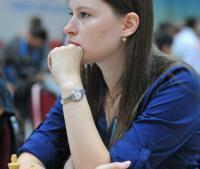
Making the Most of Breaks Between Tournaments
The life of a chess pro is a sequence of trips from one tournament to another. Some prefer to play virtually non-stop; others can afford to compete from time to time. Naturally, a person who wants to improve in chess should not only play, but also work on chess and self-improvement between events. This approach guarantees a good result. A lot depends on how much spare time you have. A long break is one thing, a short one is another. The three main components that you should pay attention to are: a) chess skill and shape b) psychology c) physical shape. Keeping that in mind, let’s discuss some tips on how to spend your free time in the optimal way in terms of chess improvement.
- Let’s say you have a long break between tournaments
By saying “long break” we mean a few months or more. This is a lot of time, and you should be able to progress a lot if you plan your activities carefully. First of all, don’t forget to analyze your tournament games. Some players prefer to take a shot at it right after the tournament, while they still remember what was going on over the board. Others prefer to rest for a few days and only then deal with this work. After having analyzed the games, you should be able to pinpoint your main current weaknesses and start working on eliminating them. In some cases it’s easy to patch things up (e.g. study a certain opening line where you are having problems). In other situations hard work may be called for (e.g. if you play the endgame like a patzer).
The abovementioned tips are “first aid” measures. The rest is connected with increasing your mastery in general. For example, studying chess (openings, middlegame, endgame), solving tactics, playing training games, etc. I have written a few dozen columns at Chess.com dedicated to different aspects of this process – take a look, and there is a good chance that you will find an article about the topic you are interested in.
A long break also allows one to take care of one’s health and physical shape. Don’t neglect psychology. If you are besieged by problems (conflicts in the family, financial troubles, low self-esteem, and so on), this will also affect your playing strength in a negative way. Therefore, having a peaceful mind is an absolute necessity for getting good results in chess.
- Short breaks
Now this case is trickier. “Short break” means less than a month. Every day counts and your plan would depend a lot on their number. If it’s just a few days, then you had better relax and deflect your attention from chess. The only plausible chess activities are solving tactics and mending your opening prep. Physical activity is usually rewarding, as it allows one’s brain to rest. The main secret is to start decreasing your activity closer to the beginning of the tournament (about a week before the start). Otherwise there is a chance of exhausting oneself. If you have psychological problems, you had also better get them sorted out before the next event.
Both long and short breaks have their pros and cons. Long breaks allow one to work thoroughly on all the components, but the con is that you may lose your chess shape. Short breaks have a serious drawback – it’s hard to tackle serious problems in patch-fixing mode. However, there is also an advantage – you maintain your chess shape and get to play more games, thus earning more experience. It’s up to you to decide what suits you best. Depending on the period of life, you may want to combine both approaches, i.e. vary between making long and short breaks. For example, before an important competition one had better take an intermediate break – not too short, not too long.
Now let me tell you about the decisive game from the European Women’s Chess Championship-2011 against WGM Nazi Paikidze. I was forced into a must-win situation to qualify for the World Championship.
Sloppy play in the opening led to an about equal position, where I tried to avoid simplifications. At some point it could result in an inferior position. The move 24. Bc4 was risky, but I had to initiate a chess fight somehow. 25…f5 was overactive and gave White the chance to exploit the e5-square. In time trouble my opponent allowed me to transfer my knight to a critical outpost, and blundered. After move 36 the game was basically decided in my favor.






